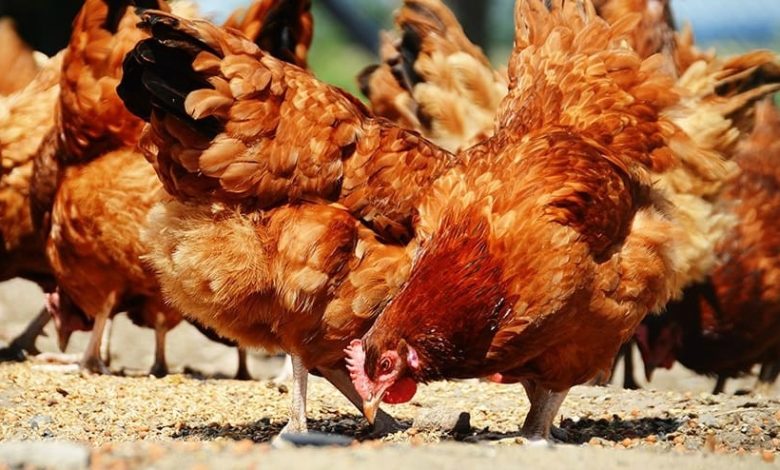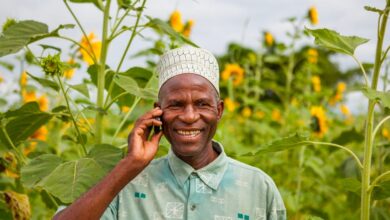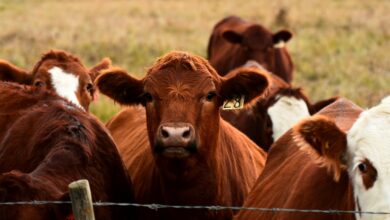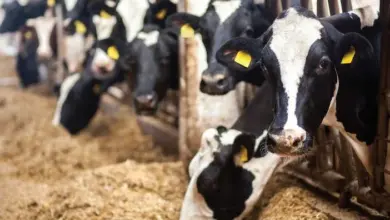
The high cost of chicken feeds has become a challenge to farmers and has seen most quit the poultry business.
However, for a group of farmers, the rise in feed prices is a blessing as they are reaping big from an on-farm chicken feed formulation venture. The group called Kathangariri Poultry CIG is located in Kirimari Ward, Embu County.
Group Secretary Pius Gathiku, says making their own feeds has also made it easy for members to rear poultry in their homes. He notes that initially, group members also struggled with buying feeds like anyone else, but not so for today after they started making their own.
“We are currently formulating chicken feeds available to our members and which we also sell to outsiders. So far, the business is good and we continue to make strides with our savings,” he said.
Despite struggling with chicken feeds, Gathiku says none of the members ever thought of starting the project, either as individuals or a group. It was until 2019 that they got linked to the National Agricultural and Rural Inclusive Growth Project (NARIGP), a government project that is implemented through the Ministry of Agriculture, Livestock Fisheries and Irrigation (MoALF&I) and the State Department for Crop Development (SDCD) with funding from the World Bank.
At first, Gathiku recalls, they were mobilised and asked to form groups of up to 30 people and then register with social services. Then, NARIGP gave the group an opportunity to pick any of the four value chains including mangoes, dairy, poultry and green grams. They settled on chicken feed formulation as most of them rear the birds and had been struggling to access feeds.
They were then assigned agricultural extension officers who trained them on feed formulation.
Savings from project
The project gave the group Sh499,750 worth of equipment including a posho mill, mixer, gumboots, sacks, overalls, ear masks and ingredients such as maize, sorghum, soya, sunflower, and lime among others to start with. Now, over three years down the line, the group boasts of savings from the project.
They sell a kilo of feeds for Sh60. In a week, they produce and sell 300kg and earn Sh18,000. The availability of feeds has encouraged members to expand poultry farming and have about 500 birds, which provide eggs and meat when sold. The members are now getting loans and investing in other projects. The group now has plans to expand and register a company that would have a higher production capacity.
The chicken feed formulation venture is one of the tens of value chains NARIGP has fronted to benefit farmer groups in 21 selected counties including Turkana, Samburu, Makueni, Kitui, Embu, Meru, Kwale, Kilifi and Narok. Others are Kirinyaga, Kiambu, Murang’a, Nakuru, Bungoma, Trans Nzoia, Nandi, Vihiga, Kisii, Migori, Nyamira and Homa Bay. Agriculture is a major driver of the Kenyan economy and the dominant source of employment for roughly half of the Kenyan people.
Yet, farmers, especially smallholders still experience production challenges which in turn hurts incomes for them, a majority of whom are in rural areas. The project is therefore designed to address the main constraints facing the agricultural sector in Kenya by increasing production and productivity using community participatory and value chain approaches. NARIGP national community development coordinator Mary Maingi said they aim to increase agricultural productivity and profitability of targeted rural communities in selected counties.
The government has therefore been addressing main constraints affecting communities such as low use of agricultural inputs, frequent droughts and climate variability, poor soils, low levels of private investment in the primary production, value addition and poor rural infrastructures, such as small-scale irrigation, roads, marketing and storage.
Others are improving market access for smallholder farmers, farm inputs, technologies and agricultural extension services.
“The project is also keen on climate-driven developments. We are using climate-smart agriculture technologies to ensure that issues of climate risks that are a challenge are being dealt with,” she added.
Another group that has benefitted from the project is Kapsika Beans Production Group from Cheptais area in Mt Elgon, Bungoma County. Today, the group is one of the highest producers of beans which it sells across markets in Bungoma County. Anette Nafuna, a ward agricultural extension officer in Bungoma, said that thousands of farmers in the area lacked information on the benefits that come with proper investments in beans.
Yet, beans are the third most eaten crop in the country after maize and potatoes. It is also a relatively cheaper source of proteins for most communities.
“If farmers commercialise beans, it will earn them a lot of money. Our data shows that during the short rainy season when they plant and focus mainly on beans as pure stand, yields are higher,” explained Ms Nafuna.
Kenya Agricultural and Livestock Research Organisation (KALRO) Director General Dr Eliud Kireger reiterated that legumes such as beans are important in bridging food and nutritional security in many households.
Bean production
He explains that the production of beans ranges from as low as 200-500 kg per acre at the farm level, despite the availability of improved KALRO varieties with a potential yield of 800-1200 kg per acre.
“In the last five years, the average bean production was 784,000 metric tonnes in about 1 million hectares. To meet the shortfall, Kenya imports about 40 per cent or 300,000 metric tonnes of yellows, red mottled and small red varieties dry beans and 40 metric tonnes of canning beans from Uganda, Tanzania and Ethiopia,” he said.
However, for the last two years, bean farming in Bungoma is changing for the better, and more farmers are starting to rake in thousands of shillings from the crop. Apart from funding the group with equipment and farm inputs, the project trained farmers in the best agronomical practices such as planting and managing beans and other legumes so as to have higher yields.
“The NARIGP trainee us stating with managing soils, planting, best seed varieties to plant, spacing, use of manure, weeding, harvesting and how to avoid post-harvest loses,” says Reuben Machacha, a member of the group.
He adds that, following the empowerment, farmers now harvest at least 10 bags of beans per acre in Bungoma. The project promotes improved bean varieties such as Nyota and Angaza developed by Kenya Agricultural and Livestock Research Organization (KALRO). Another group that is laughing all the way to the bank is Naaro Tissue Culture Growers Banana Self-help Group located in Nagraria Ward, Murang’a County.
The group is making a kill by supplying ripe bananas to schools, hospitals and the local market.







